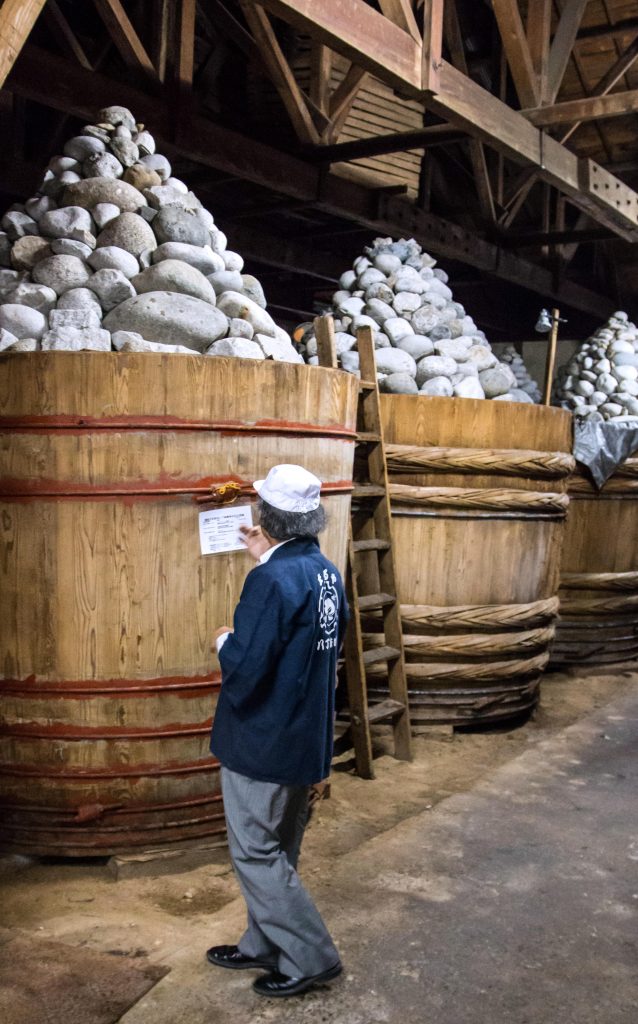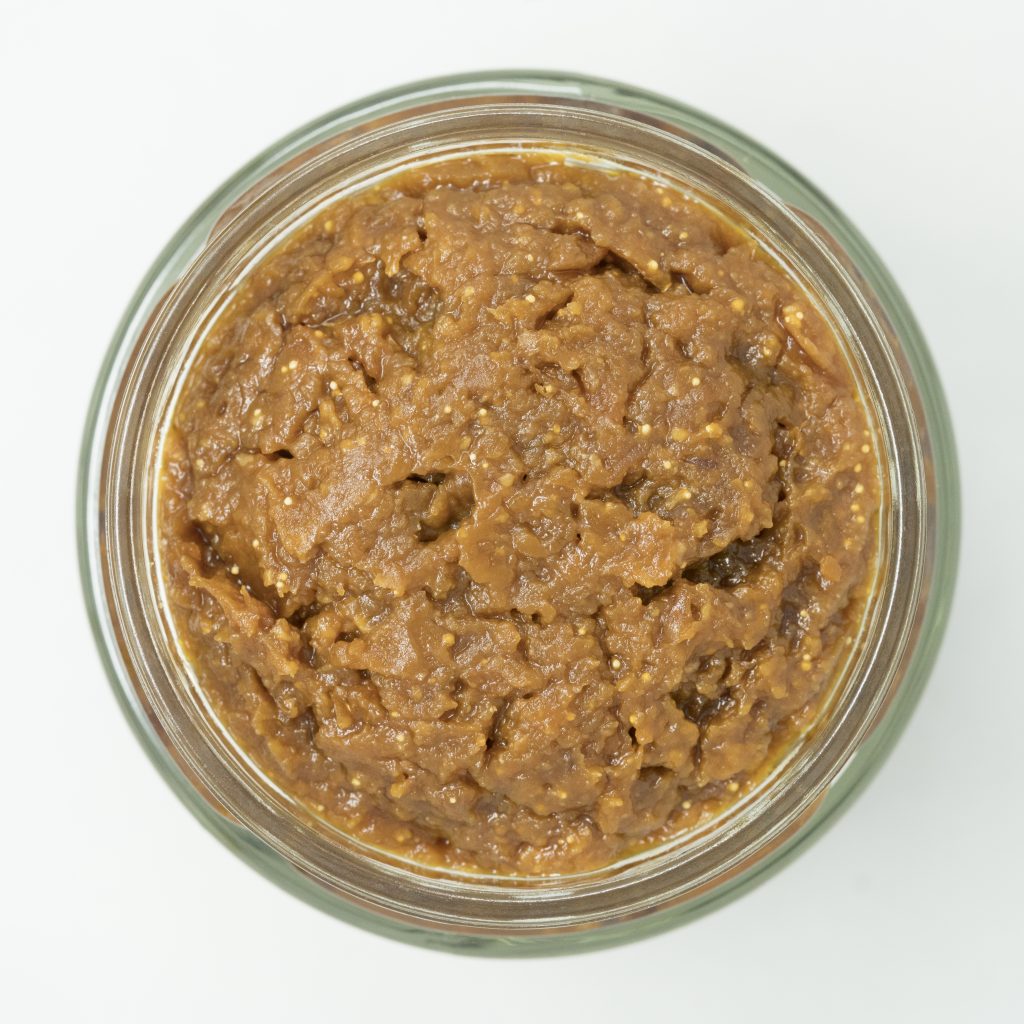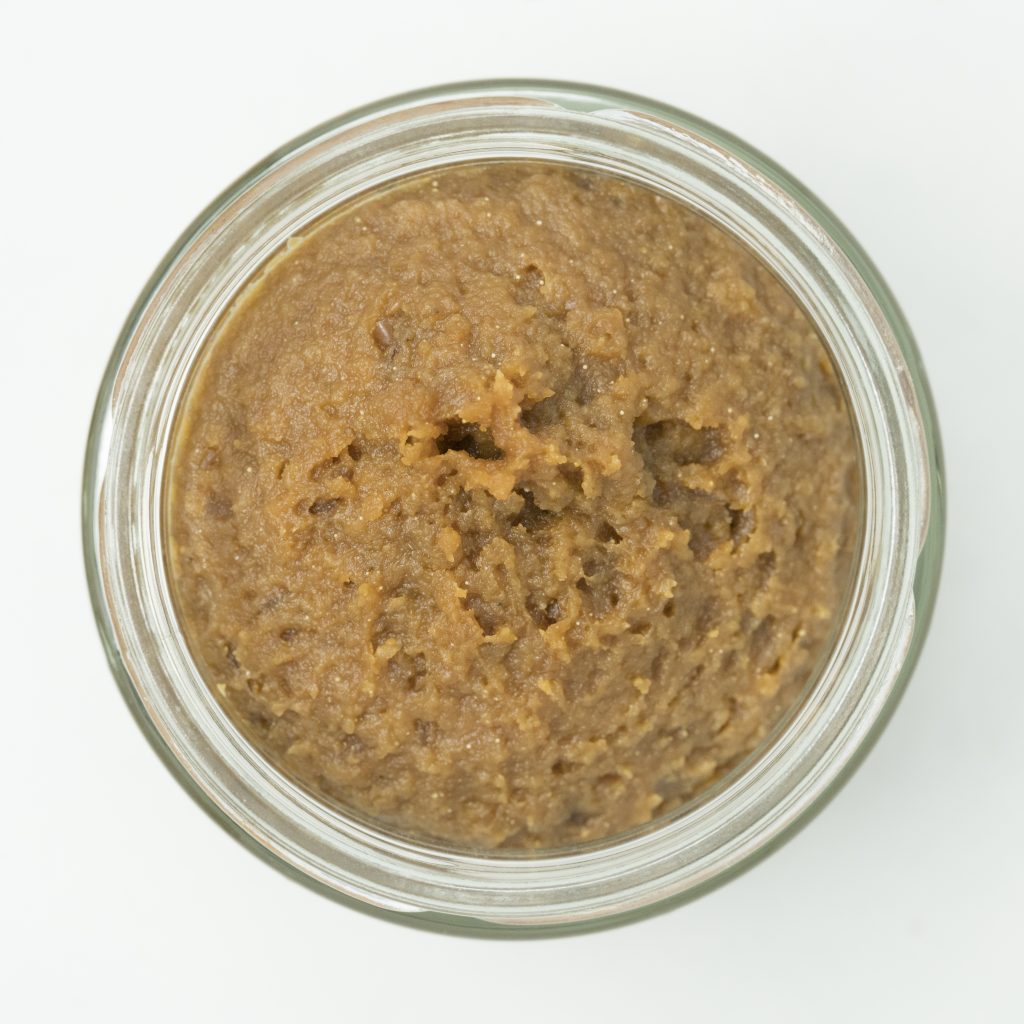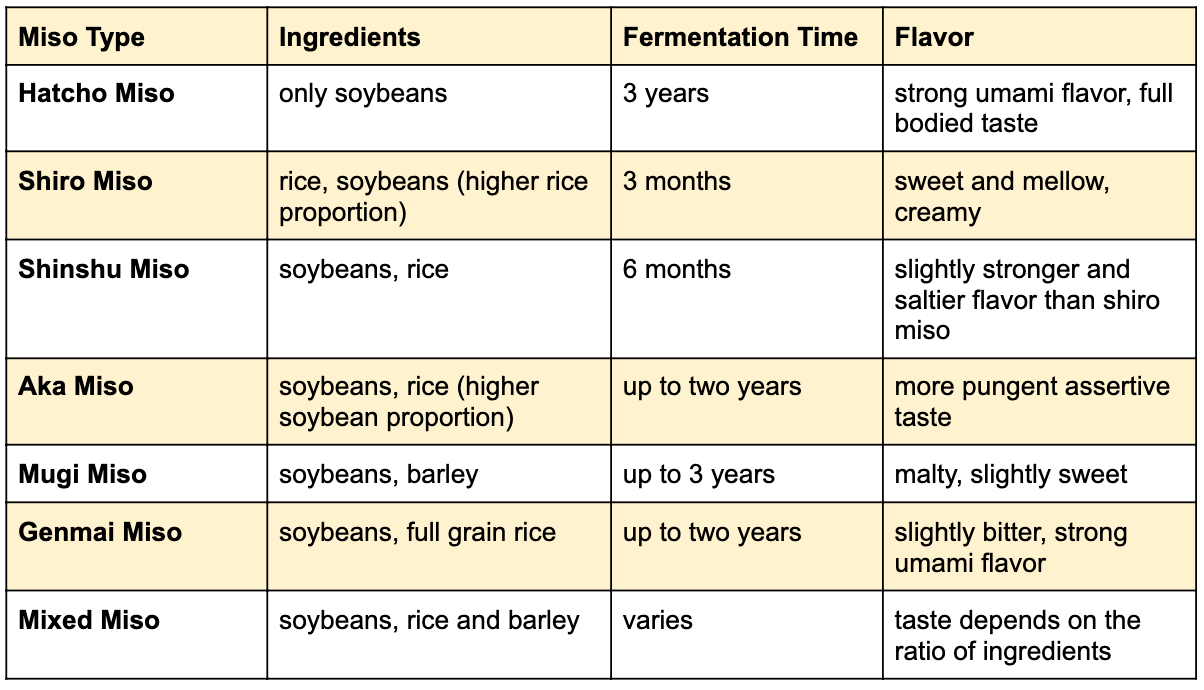In vielen Kulturen auf der Welt hat man seit Tausenden von Jahren Fleisch und Fisch fermentiert, um es länger zu erhalten. Somit hat man irgendwann den Umami Geschmack entdeckt, der heute bereits als fünfter Geschmackssinn gilt, und welcher ein direktes Resultat der Fermentation ist. Durch den Fermentationsprozess werden Proteine in ihre beständigen Aminosäuren zersetzt, wodurch Glutaminsäure frei wird – die Essenz des Umami Geschmacks. Diese Entwicklung zeigte sich auch in Süd-Ost Asiens auf. Da die Sojabohne schon zu antiken Zeiten kultiviert wurde und genau wie Fleisch, ein vollständiges Aminosäure Profil hat, haben die Menschen Ost Asiens schon seit langer Zeit die Vorteile der Sojabohne durch Fermentation ausgeschöpft.
Fermentierte Sojabohnenpaste hat diverse Formen und Namen über verschiedene Länder Ostasiens hinwegs, z.B Doujiang(豆酱) in China, Miso (味噌) in Japan und Doenjang (된장) in Korea. Die Aromen variieren in den verschieden Regionen Asiens zwischen scharf, süß, und herzhaft. In jeder Esskultur werden sie als wesentliche Würzmittel geschätzt und alle werden mit Salz, Sojabohnen, und verschiedenen Bakterienkulturen – die Motoren des Fermentationsprozesses – hergestellt.
Like soy sauce, Miso can come in a variety of colours and flavors. Another similarity to soy sauce is that fermentation time and ingredients determine the taste and color of the miso. To give an insight into how the different combination of ingredients with soy and the fermentation time creates a huge diversity of tastes, we will focus on the Japanese Miso Palette as an example. In Japan, Miso can be made of a combination of rice and soybeans, barley and soybeans, or only soybeans.

This miso is made only from soybeans and fermented for almost three years. Hatcho Miso is named after the small village which it originated many hundred years ago. Hatcho miso counts as the most noble miso of all misos. Also, it used to be an essential food for supplying the military in Japan during the time when there were a lot of civil wars. As it is made only from soybeans, it develops a strong umami taste but has a less creamy consistency than most of the other miso types. Moreover, the long fermentation period unleashes an intense flavor. All in all, Hatcho miso can be said to have a full-bodied taste and a bitter, malty flavor that has a resemblance with the flavor of dark chocolate.

Shiro Miso is made of rice and soybeans and generally has the highest proportion of rice amongst all miso types. It also has the shortest fermentation time of all misos (3 months) which is where it gets its light colour from, hence the name Shiro, which means white in Japanese. Its short fermentation time and high rice content contributes to a rather mellow and sweet, and creamy flavor. Due to its subtle flavour, it is a good miso to get started with if one is not yet acquainted with the world of miso. Due to its mild and sometimes slightly nutty taste, it can even be used in place of dairy in some cases.
Product Example: Shiro Miso
Recipe Example: Shiro Miso Tagliatelle

This miso has a rice content similar to Shiro miso but is fermented over a slightly longer period than white miso (about 6 months). It gets its name from having originated in the Shinshu region in Japan. Due to its longer fermentation time, it has a slightly saltier and stronger flavor, but can be used for similar purposes as Shiro Miso.

Aka Miso usually consists of 70 % of soybeans and 30 % rice. It’s fermentation time can be as long as two years and its name is derived from its red/amber colour. It is more assertive in taste than white or yellow miso, and it is better suited for dishes for which a strong umami flavor is favorable.

Whereas in most miso types made with rice and soybeans, peeled white rice is used, this type contains full grain, unpeeled rice. It is usually fermented over a long time, up until two years and is named after the Japanese word for brown rice. The brown rice contributes to a slightly bitter taste, and in combination with its fermentation time, causes it to acquire its dark brown colour. This miso is one of the Japanese classics.
Product Example: Genmai Miso

For Mugi miso, barley is used instead of rice. Mugi Miso has an exceptionally long fermentation time that can be as long as three years. Unsurprisingly, Mugi also translates into Barley from Japanese. It accounts for 11 % of total domestic production and is produced in the southern regions of Kyushu, Shikoku, and Chugoku in Japan. As barley contains less starch than rice, the resulting flavor is more intense and rather malty. It can be found in a variety of colours ranging from medium brown to dark brown.
Product Example: Ama Mugi Miso
Recipe Example: Asparagus Risotto
While practically any miso can be mixed, this miso refers to a special mixture of white and red miso. As such, rice, barley, and soybeans are combined. This combination helps achieve a unique taste and the ratio of both ingredients can be altered to define the preferred taste. Moreover, the combination of the three ingredients makes it a very versatile miso.
Aside from these miso types and the combinations of ingredients used for them, there are also various other variations. Miso can be made with millet, rye, buckwheat, poppyseeds, Quinoa, corn, and even chickpeas.
When it comes to how to apply each miso, there are no definite uses for each misos. Yet, it can generally be said that lighter misos with more milder flavors work well in combination with lighter dishes in which the miso should not trump the flavor of the dish nor stain the color of a meal. Meanwhile, darker miso types with a more assertive taste can be applied when a stronger umami flavor in the dish is desired. Misos can also be combined which allows for an even broader scope in tastes. All in all, you can be very flexible when deciding what miso to apply.
At last, we have summarized all the Information for you in a table.
